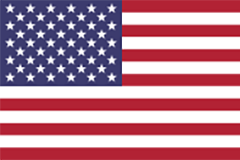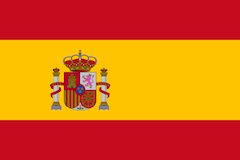Pigments and dyes absorb visible light, each at a different wavelength, which is why we perceive them as different colors. The wavelengths of light that are not absorbed are instead reflected. Normal photographs are reproductions of what we see made when cameras capture the visible light reflected from a surface. Documenting how colorants reflect light from regions of the spectrum we can’t see, including the infrared and ultraviolet ranges, is often useful as well, particularly because not everything that appears the same color to our eye absorbs and reflects different wavelengths of light equally. That is to say, even pigments and dyes that are visibly similar to the human eye will have different absorption and reflectance spectra that can be used to distinguish them.
Multiband imaging is a technique in which a series of images is captured with different filters in front of the camera lens, each designed to allow only specific, narrow ranges of wavelengths of light to pass through and be detected. This series of images can reveal unique material properties that the eye alone is unable to detect (figs. 5, 6). In 2014, a team of imaging specialists, conservators, and conservation scientists at the Smithsonian Museum Conservation Institute developed a multiband imaging technique that can identify indigo (Webb, Summerour, and Giaccai 2014). Indigo most strongly absorbs visible light at ~660 nm and reflects the most light at ~800 nm, which is in the infrared range (Leona and Winter 2016). By capturing band pass images in these ranges and then subtracting one from the other, an image is created in which areas of the textile colored with indigo appear bright white.
Since both the XRF and the microscopy already performed had indicated the use of dyes, and knowing that indigo was a commonly encountered blue dye on textiles from the Andes, Craven applied this nondestructive method to the Prisoner Textile. In the subtraction image of the Menil’s fragment (fig. 7), we can infer that every area that appears white is almost certainly colored using indigo dye. Interestingly, that not only occurs in both dark- and light-blue areas (including preparatory sketches and details such as eyes, fingers, toes, and ropes) but also in areas we would describe as green, suggesting that green was achieved by overpainting yellow areas with indigo dye. Now in possession of a “map” of indigo, future plans include confirmation of this identification (eliminating the possibility of a blue with a similar reflectance curve) using fiber optic reflectance spectroscopy (FORS), as well as microfade testing of all colorants to measure their lightfastness.
At this point in our explorations, we have only just begun to understand the Prisoner Textile’s colorants. Indigo is a relatively lightfast dye with a linear fading rate, so it is unlikely to be the most sensitive of the colorants used on the textile (Crews 1987). The more we are able to divine about the susceptibility of the other colorants to light-induced damage, the easier it will be to plan for the textile’s preservation. For the time being, exhibition parameters such as light levels and display duration will be conservative, and will adjusted as we uncover more. Every bit of information, no matter how small, fills lacunae in our knowledge about this piece in particular, about its sister panels by extension, and about Andean artistic traditions in general. Not only will this knowledge continue to inform the preservation of the textile, but the artists’ material choices may have deeper meaning to those studying the art, language, science, technology, and economy of this period, as the objects they affect are nothing if not products of their time, bearing fingerprints of their culture. By undertaking technical art historical studies such as these, scholars are better poised to improve our understanding of these captivating objects, and the people who made them.










